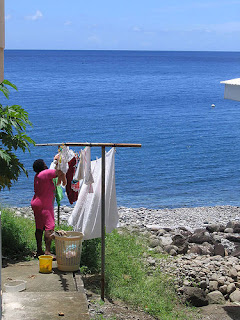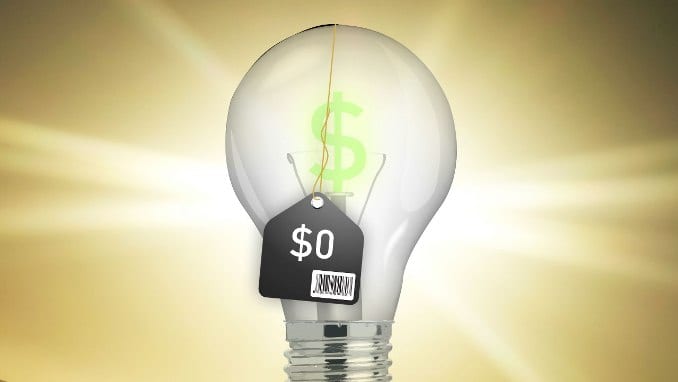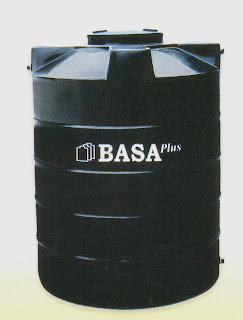5 Tips to reduce your monthly energy bill by 20%
This post will present a practical solution to Jamaica’s energy crisis and require that Jamaicans stop pointing fingers and play their part, since plans for a 360MW Liquefied Natural Gas (LNG) Project failed to materialize. The LNG project was expected to reduce the cost of electricity by up to 40% and scheduled to be completed by 2015. The recent turn in the LNG development will give the island a brief window to sit and strategically plan a sustainable way forward with a solid supply of renewable composed primarily of wind and solar.
 |
| Jamaica Consumed about 30 million barrels of oil in 2009 |
Energy is generated for the consumer, consequently I think the consumers are the ones responsible for our islands energy crisis. Let’s see why: According to [1] Jamaica consumed about 30 million Barrels in 2009, more oil than Zimbabwe, Cameroon and Ethiopia, COMBINED. Here is the interesting part, Jamaica has a population of less than 3 million people while the comparison countries have a combined population of 117 million residents. How can an island so small be so energy intensive? Jamaicans need to wake up and conserve on their energy consumption. Here are five simple tips each household can implement to reduce their monthly energy bill and contribute to a greener, more sustainable Jamaica where we spend more on production and less on oil importation.
These 5 tips can be implement in your home without spending an extra dollar and promises to reduce your energy bill by up to 20% and in turn reduce our nation’s oil importation. I am all for renewable technologies but this post will not recommend that you buy a single wind turbine or solar panel to reduce your energy bill.
1. Use Ceiling or Standing Fans instead of Air Conditioners
.jpg) |
| Use fans instead of Air Conditioners |
Heating and Cooling may account for up to 60% of your monthly energy consumption in your home or office. The cost for cooling an entire home or office space in Jamaica using a combination of AC and Fan for 8 hours per day and 20 days for the month would be $4,500 [2]. Comparing this technique with cooling your home with 3 fans using the same parameters will cost $990.00 in a given month. 100% Renewable Jamaica is more than just wind and solar its about a lifestyle change. Opening your window and allowing clean fresh air to blow across your room will almost always ease your mind and refresh your thoughts. Air Conditioners on the other hand, beside being a killer on your energy bill, sucks the freshness out of the room, cools the air, then blows it back out. Besides the super hot summer months we should allow the cool afternoon breeze to penetrate our homes and turn off the air conditioning unit.
2. Wash your clothes by hand or hire someone to do your laundry
 |
| Wash your clothes by hand NO washer/dryer |
I promised that you would not pay an extra dollar yet my 2nd recommendation is to PAY someone to do your laundry. Here is a comparison of the figures.
Not only will you be providing a job but A washing machine is probably one the most energy intensive appliance in your home [3], if you don’t use AC. Lets say you use a washing machine 3 times per month for about an 1 hour each time and your dryer for about 1.5 hours, this might cost you up to $1,938 per month to operate both [4]. A typical machine accounts for a great portion of the water usage in your home and may use up to 40-Gallons of water for each cycle [5]. This will cost an additional $800 for water expenses totalling $2,738 monthly for water and electricity compared with paying someone $2,000 per load or doing it yourself where you could save it ALL. If washing your own clothes or paying someone to do it for you is not an option you may be want to consider not using the hot water feature on your machine. Up to 90% of the energy the machine consumes is used to heat the water. If you must heat the water use around 30 degree Celsius compared to higher temperature that require a greater energy consumption.
3. Buy your child a Bicycle
| Buy your child a Jamaican Bicycle and reduce energy bill due to gaming on electronic devices. |
The Jamaican population under 14 years old is said to be 20% therefore totalling 717,860 children [National Development Plan]. Summer last for about 3 months and at the rate at which technology and electronics is capturing these kids, this can be considered as 3 months of PlayStation, WII, Cartoons, Television shows, Facebook, Twitter, online Messenger, computer games and finally mobile messenger. Summer is the most energy intensive period for households with children due to the fact that school is no longer in session. Here is how we can change this: 100% Renewable Jamaica will require parents to produce innovative ways to get their kids to play outdoor. They will have to be reintroduce to Kites, hide an seek, play with the neighbour, a bicycle, trips to the park or community center etc. This will reduce your energy bill by up to 15% during the long summer days if you can get your child from in front the television or computer.
4. Store your own water
The cost for water supply might be considered mild from the customers perspective but the energy cost related to providing the commodity is anything but. The costs the National Water Commission’s an average of $108 million [6] per month in electricity to pump water to its customer. “The NWC is a high consumer of electricity. As a matter of fact 50% of the water they produce goes to leakage. We are literally using expensive electricity to pump water into the ground” Vidal, Principal Director for Energy in the Ministry of Science Technology and Mining [5]. This can be significantly reduced if residents are able to store their own water supply. This will eliminate the ~$3,000 the average Jamaican pays for water supply and also guarantee you a more stable supply during droughts and low water periods, a peace of mind which cannot be quantified. Its best to get a translucent tank which allows you to see the water level which would enable you to contact the relevant agency to refill your tank if needed.
5. Use stove to reheat instead of a microwave
 |
| A mircowave consumes half its energy when it’s not in use. Utilize stove to reheat to reduce energy bills |
A microwave is an energy beast, if you have any intention of reducing your energy bill by up to 20% as promised in this post you should unplug it, take it out of your kitchen and find somewhere safe and warm in the storage to hide it.
Here is why: A Sharp microwave [7] rated at 800W consumes a total of 1,250W of energy when in operation. But here is the interesting part. This device may use up to half the total amount of energy it consumes monthly when it’s NOT in use, yes when NOT in use. There are 24 hours in a day, Considering you use this energy monster for 5 minutes daily it then sit in standby mode for the other 1435 minutes in the day. It uses 1,250W of energy when its in use and 3.5 W when it’s not. Now therefore; that’s equivalent to 6,250W when operating and 5,022W when not operating per day. And how much will this monster cost you per month using these figures? A whopping $12,700 monthly. But no one uses a microwave EVERYDAY so lets say 2 days per week that would equate to $5,800 for the month. A 100% Renewable home will need to be 100% free of microwaves, a stove might not be able to pop your pop corn but I assure you, with a little bit of patience you can heat EVERYTHING else on the good old gas stove and save yourself a few thousand microwave dollars per month.
Conclusion
Please share this, our nation needs to hear this. Like or Tweet, go ahead and d’weet 🙂







Comments (15)
Seperates the men from the boys .
nice
water stills need to be pumped into the catchment area.
Its called a catchment because it ‘catches’ water Bro… like first time days country people who have a tank and gather water from the roof… All of a sudden we think tanks are not cool and NWC is the way to go…
not saying tanks arent kool, i prefer them actually, hate the pump situation, just saying, water is still going to b needed to pump into the catchment area
Oh, I got it… :)… It depends really on how you do the set up. Because if you have a tank on the second floor and you have rain water harvesting then the first floor would not need a pump to either catch nor distribute but if you don’t then you’d be right and that would need a pump to get it in the catchment area
kool, but it still saves energy atleast in one way, so it stills remain true to the theme
Rain water?
What is that?
Its a power supply and u pull it up for power and push down when not in use
figured that much but wht devices can it be used on
Where does one gets such energy saver device? I presume it can be plugged into an outlet, right?
where is this available
still waiting for you to come and elt’s make that bike!
Maravilha, os artigos tem nos ajudado muito em nossas instalações, elétrica, eletricista